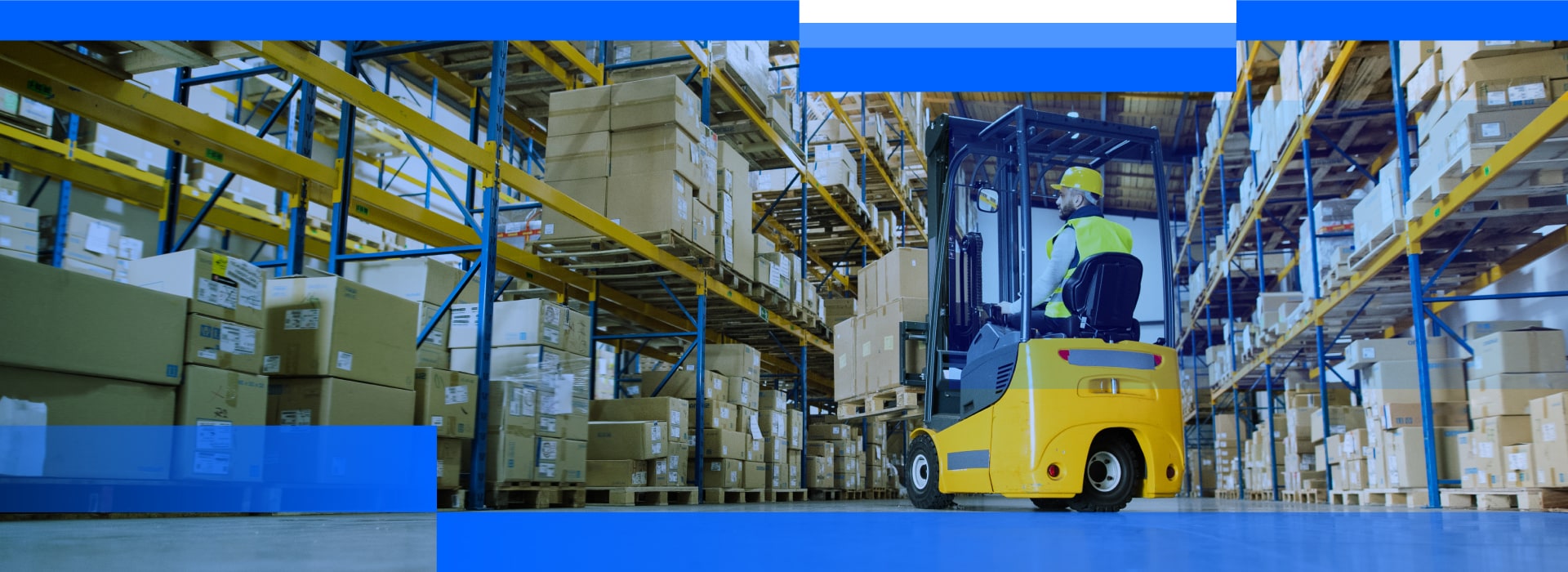Home > TradeEdge > Blogs > How can AI help overcome supply chain challenges in retail?
How can AI help overcome supply chain challenges in retail?

Table of Contents
Confronting the data stream is challenging for companies in any industry, and the retail segment is no exception. With the retail domain frequently evolving, the players in the industry are coming across various uncalled challenges. Thus, this brings the firms to a situation where they need to streamline their processes with new and innovative decision-making strategies to stand in the competition.
Also, there is a continuous data flow across the supply chain, multiple consumer touchpoints, and digital sources like social media. So, controlling this immense data influx has become a significant challenge for the retail sector as they are over-reliant on manual intervention. This is where the role of AI in retail supply chain comes into play.
For instance, a Fortune 500 multi-national conglomerate manufacturing and selling semiconductor chip, implemented machine learning and automation and was able to harmonize and auto-verify 80% of the data with the master data for improved retailer collaboration. Consequently, the company can minimize the manual efforts in processing data significantly, thus making data more accessible and decision-making more timely and effective.
However, one of the most significant challenges of retail lately has been the data generated across businesses often exists in silos, along with skills shortages and a lack of data-driven decision making.
Due to this fragmentation, data consolidation becomes a major hurdle for firms to overcome. Hence, retail supply chain solutions become even more crucial for managing the supply chain more effectively, reducing return rates, enhancing store management, designing better products, and targeting customers more successfully.
Limitations in traditional supply chain
Traditional retailing has a long chain of mediating channels like wholesalers, distributors, and retailers. As a result, it becomes difficult for firms still following the traditional approach to directly connect with the customers due to the chain of mediators. Also, with the retailers promoting their products in their stores, their branding and marketing get confined to stores only.
Traditional retailing may or may not have an online presence, as most of their sales are made through stores, and they have an element of uncertainty in gaining consistent sales and revenue. The disconnect with customers can impact customer retention, as the traditional approach caters only to the mass market.
Traditional retailers are not involved in direct sales, and therefore, it becomes difficult for them to identify and act upon unfulfilled customer needs. As the traditional retail business models incur more costs due to middlemen and their commissions, there are more chances of potential losses for the companies if they are targeting a mass market.
Going beyond conventional data processing model
COVID-19 has compelled many retail firms to shut down physical stores due to the escalating uncertainties for the future. These sudden shifts due to the pandemic and the limitations of the traditional model have forced retailers to look for other options to survive in the e-commerce market.
Consequently, they have prioritized the digital-first and omnichannel approach. Therefore, retailers focused on physical stores and direct engagement over omnichannel strategies have struggled to react quickly. As a result, firms that quickly reimagined their omnichannel approach, besides adapting to the shifting consumer behaviors for establishing a unique customer experience, are recovering faster from the hiccups.
Hence, to remain relevant in this current landscape, retailers should build AI in supply chain to process data more efficiently to serve customers better. However, firms must focus on specific goals across five actions which are:
Due to this shift in customer behaviors, e-commerce sales in apparel, department stores, and beauty products have grown by nearly 10% points, on average, since the commencement of COVID-19. Hence, e-commerce penetration in grocery domain that has soared from 2% to 3% before the crisis, rose to 8% – 10% during the peak period of the pandemic. 1
Importance of supply chain solutions in retail
A retail company has various challenges like prolonged fulfillment times, elevated fulfillment costs, and the incompetence to offer competitive shipping options and prices. Hence, streamlining supply chain and implementing technologies like AI in retail supply chain will nullify the current supply chain challenges.
Hence, applying supply chain solutions such as TradeEdge enables companies to manage back-office operations efficiently by bridging the data gaps, thus boosting productivity and profit margins.
Also, implementing retail supply chain solutions can improve efficiency considerably, especially in the transportation domain, where online vehicle tracking (and, therefore, packages) helps lower indecision and take corrective actions whenever and wherever needed. Thus, real-time supply chain solutions play a crucial role in the Last Mile Delivery (LMD) segment in retail, where geo-coding, real-time traffic, and dynamic route planning facilitate accomplishing better efficiency and service levels.
Benefits of AI and automation in retail supply chain
Automating labor-intensive tasks: AI in retail supply chain facilitates time-consuming tasks such as processing orders, generating essential documents, and paying out invoices that free humans to invest time in more value-added tasks.
Eliminating human errors: Tasks performed manually are prone to errors. Therefore, by removing the intervention of humans, automation lowers the risk of errors like duplicating orders and wrong data entry from inventory.
Increasing visibility in supply chain: Supply chain visibility involves a lot of connectivity, communication, and responsibility from both merchants, suppliers, and service providers. Hence, digital automation automatically records and informs data in near real-time, allowing the involved parties to access important information when required, track inventory, and communicate promptly through the supply chain. Thus, improved supply chain visibility can help firms quickly detect and resolve bottlenecks to avoid further delays and disruptions, thus increasing overall efficiency.
Increasing customer experience: With retail supply chain solutions automating and streamlining supply chain, the customers are bound to reap the benefits. Thus, an automated supply chain gets accurate orders fulfilled and delivered to customers quickly, which helps you provide high customer satisfaction. Thus, most retailers are reliant on effective management strategies that enable them to handle several delivery options and keep their customers satisfied with service.
Conclusion
The retail industry is under pressure as margins are stressed from all sides, from greater costs for overseeing e-commerce supply chains to elevated investments to meet the new competitive ecosphere and the steadily increasing labor costs. Hence, implementing AI in supply chain will reform retail business approaches and the wider value chain, thus forming companies with fewer layers and an improved, trained, and trusted workforce vested by real-time data and analytics.


Possibilities Unlimited
Possibilities Unlimited
Inspiring enterprises with the power of digital platforms
More blogs from EdgeVerve →